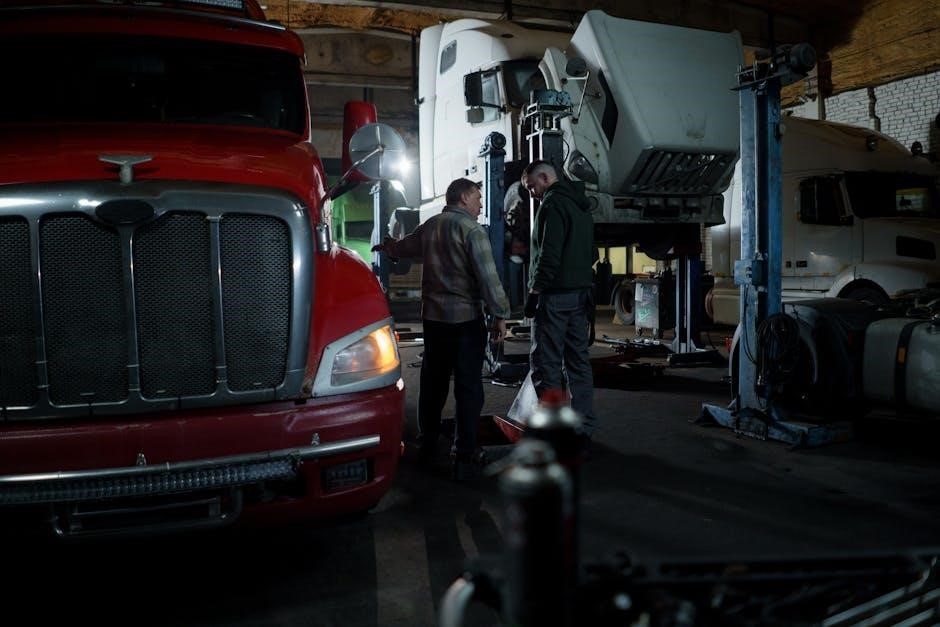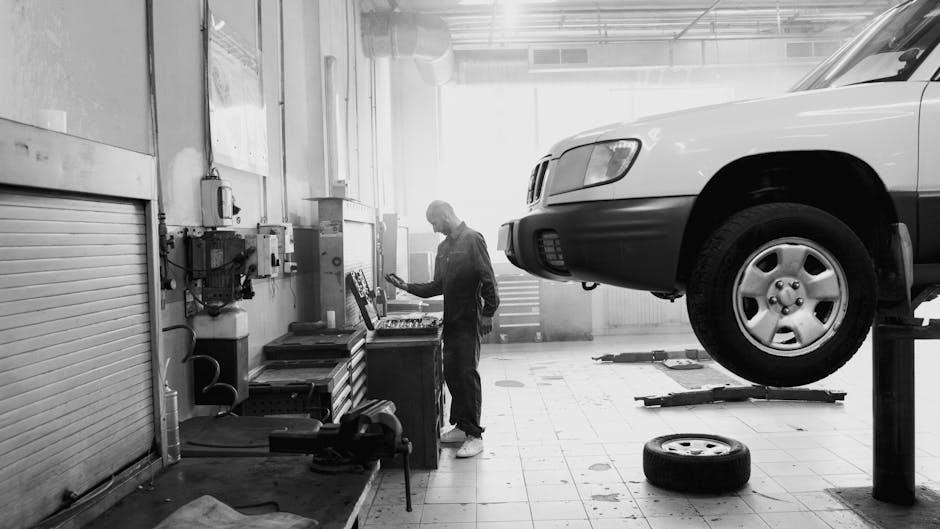
Manual car stalling occurs due to various reasons, including driver error,
- mechanical issues
and lack of practice, resulting in engine shutdown, which can be frustrating for drivers, especially beginners, every time․
Understanding the Basics of Manual Car Stalling
Manual car stalling is a common issue that many drivers face, especially those who are new to driving manual transmission cars․ To understand the basics of manual car stalling, it is essential to know how the clutch and gearbox work together․ The clutch is a critical component that connects and disconnects the engine from the transmission, allowing the driver to shift gears smoothly․ When the clutch is not used correctly, it can cause the engine to stall․ Understanding the basics of manual car stalling requires knowledge of the clutch mechanism, gearbox, and driving techniques․ By learning about these components and how they work together, drivers can better understand why their car stalls and take steps to prevent it․ This knowledge is crucial for safe and smooth driving, and can help drivers to avoid stalling their car in different driving situations․

Causes of Manual Car Stalling
Driver error and mechanical issues are common causes of manual car stalling, resulting in engine shutdown suddenly every time a driver makes mistake․
Worn-Out Clutch and Driving Technique
A worn-out clutch is a common reason for manual car stalling, as it fails to engage gears properly, causing the engine to shut down․ The driving technique also plays a significant role, as releasing the clutch too quickly can lead to stalling․ Additionally, a clutch that is not fully disengaged can cause the engine to stall, especially when shifting gears․ To avoid stalling, it is essential to develop good driving habits, such as slowly releasing the clutch and using the correct gear for the speed․ Furthermore, regular maintenance of the clutch can help prevent wear and tear, reducing the likelihood of stalling․ By understanding the relationship between the clutch and driving technique, drivers can take steps to minimize the risk of stalling and ensure a smooth driving experience․ This requires practice and patience to master the art of driving a manual car․
Clutch Mechanism and Its Role in Stalling
The clutch mechanism plays a crucial role in manual car stalling, involving complex components and processes that affect engine performance and transmission stability always perfectly․
How the Clutch Works in a Manual Transmission Car
The clutch is a critical component in a manual transmission car, playing a vital role in the transmission of power from the engine to the wheels․ It consists of a friction plate, pressure plate, and release bearing, which work together to engage and disengage the engine from the transmission․ When the clutch pedal is pressed, the release bearing pushes the pressure plate away from the friction plate, disconnecting the engine from the transmission․ This allows the driver to shift gears smoothly and control the speed of the car․ The clutch also helps to prevent the engine from stalling by allowing the driver to slowly release the clutch pedal while pressing the accelerator pedal․ Understanding how the clutch works is essential for driving a manual transmission car safely and effectively, and for preventing common problems such as stalling․

Prevention Techniques for Manual Car Stalling
Mastering clutch control and good driving habits helps prevent manual car stalling, ensuring smooth gear shifts and engine performance, every time, with proper techniques and practice always․
Mastering Clutch Control and Good Manual Transmission Practices
To prevent manual car stalling, it is essential to master clutch control and develop good manual transmission practices․ This can be achieved by practicing smooth and gradual clutch engagement, avoiding sudden releases, and using the correct gear for the speed and terrain․ Additionally, drivers should be aware of the clutch’s biting point and learn to control it effectively․ By doing so, they can minimize the risk of stalling and ensure a smooth driving experience․ Good manual transmission practices also involve using the clutch and gearshift in harmony, and being mindful of the vehicle’s speed and momentum․ With time and practice, drivers can develop the skills and techniques necessary to prevent stalling and become confident and competent manual transmission drivers, which is crucial for safe and enjoyable driving․ Proper techniques and practice are essential for mastering clutch control․

Dealing with Engine Stalls
Remain calm and follow proper restart procedures to minimize damage and ensure safety, every time an engine stall occurs, using correct techniques is essential always․
What to Do If a Stall Happens and How to Minimize Stalling
To minimize stalling, it is essential to understand the proper techniques for restarting the engine after a stall․ This includes remaining calm and composed, shifting into neutral gear, and slowly pressing the clutch pedal down․ The driver should then wait for a few seconds before restarting the engine, ensuring that the vehicle is in a safe location․ By following these steps, drivers can minimize the risk of stalling and ensure a smooth restart․ Additionally, practicing proper driving techniques, such as gradual acceleration and smooth gear shifts, can also help to reduce the likelihood of stalling․ By combining these techniques with regular vehicle maintenance, drivers can minimize the risk of stalling and enjoy a safe and smooth driving experience․ Regular practice and patience are key to mastering these techniques․

Conducting a Stall-Speed Test
Locate the tachometer and check RPM to determine the stall speed, using immobilizers and parking brake for safety, every single time, with careful attention to details always․
Locating the Tachometer and Checking RPM
To conduct a stall-speed test, it is essential to locate the tachometer, a tool that measures the engine’s RPM․ The tachometer is usually found on the dashboard, and its location may vary depending on the car model․ Once the tachometer is located, the next step is to check the RPM․ This involves starting the engine and checking the RPM reading on the tachometer․ The RPM reading will indicate the engine’s speed, which is crucial in determining the stall speed․ By following these steps, drivers can gain a better understanding of their car’s performance and identify potential issues that may lead to stalling․ The process of locating the tachometer and checking RPM is relatively straightforward, and it provides valuable information for drivers who want to improve their driving skills and prevent stalling․ Regular checks can help prevent engine damage․